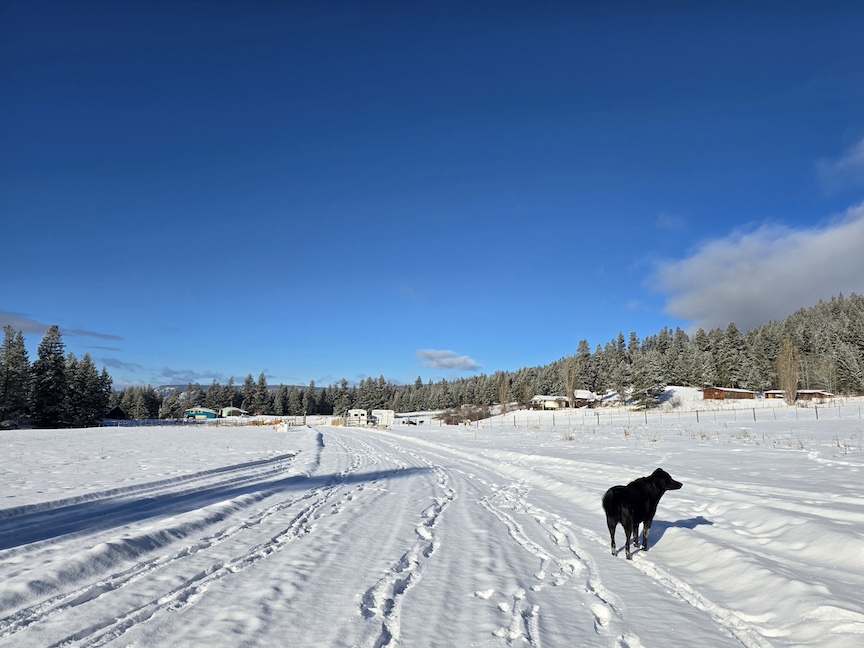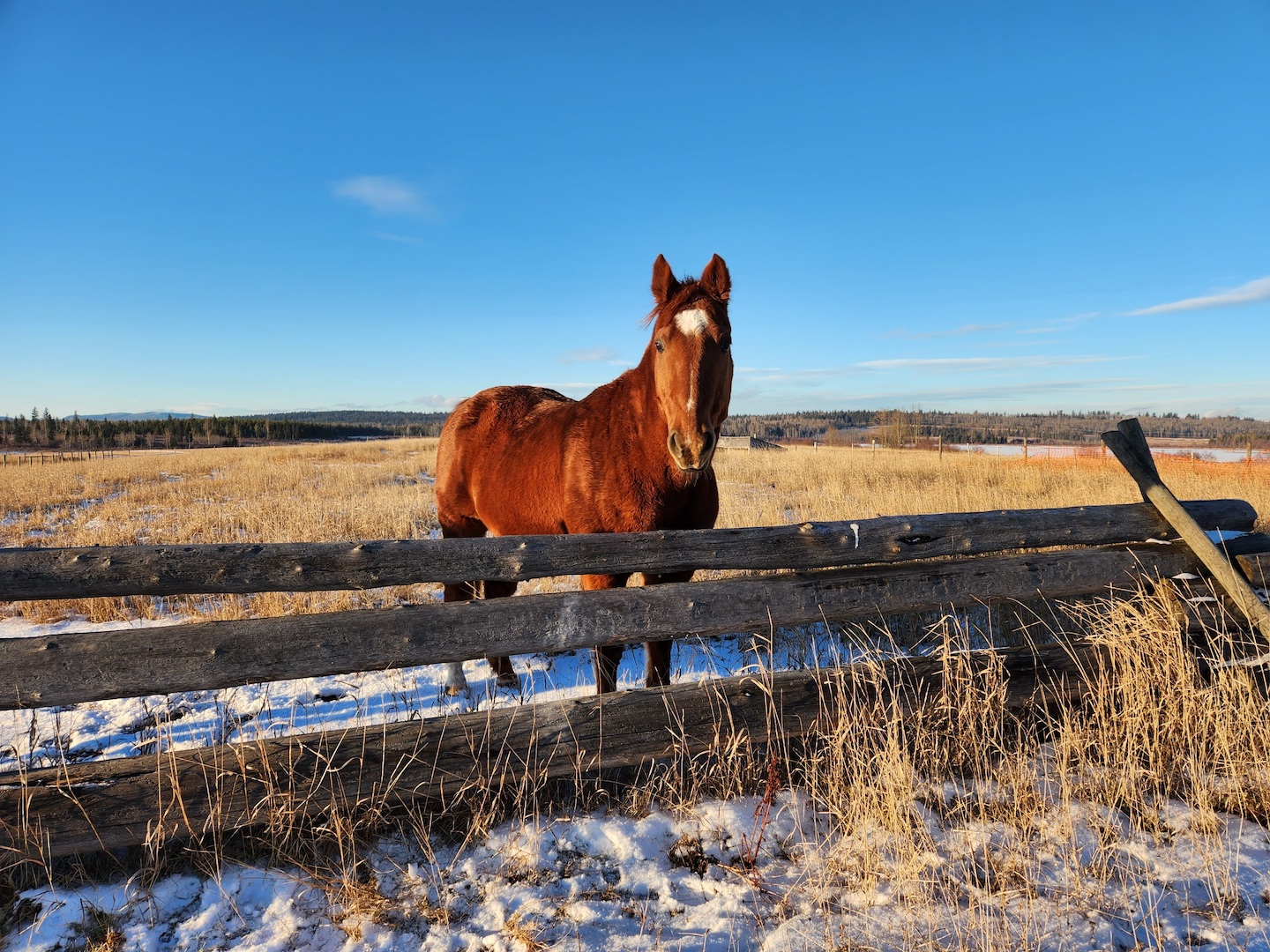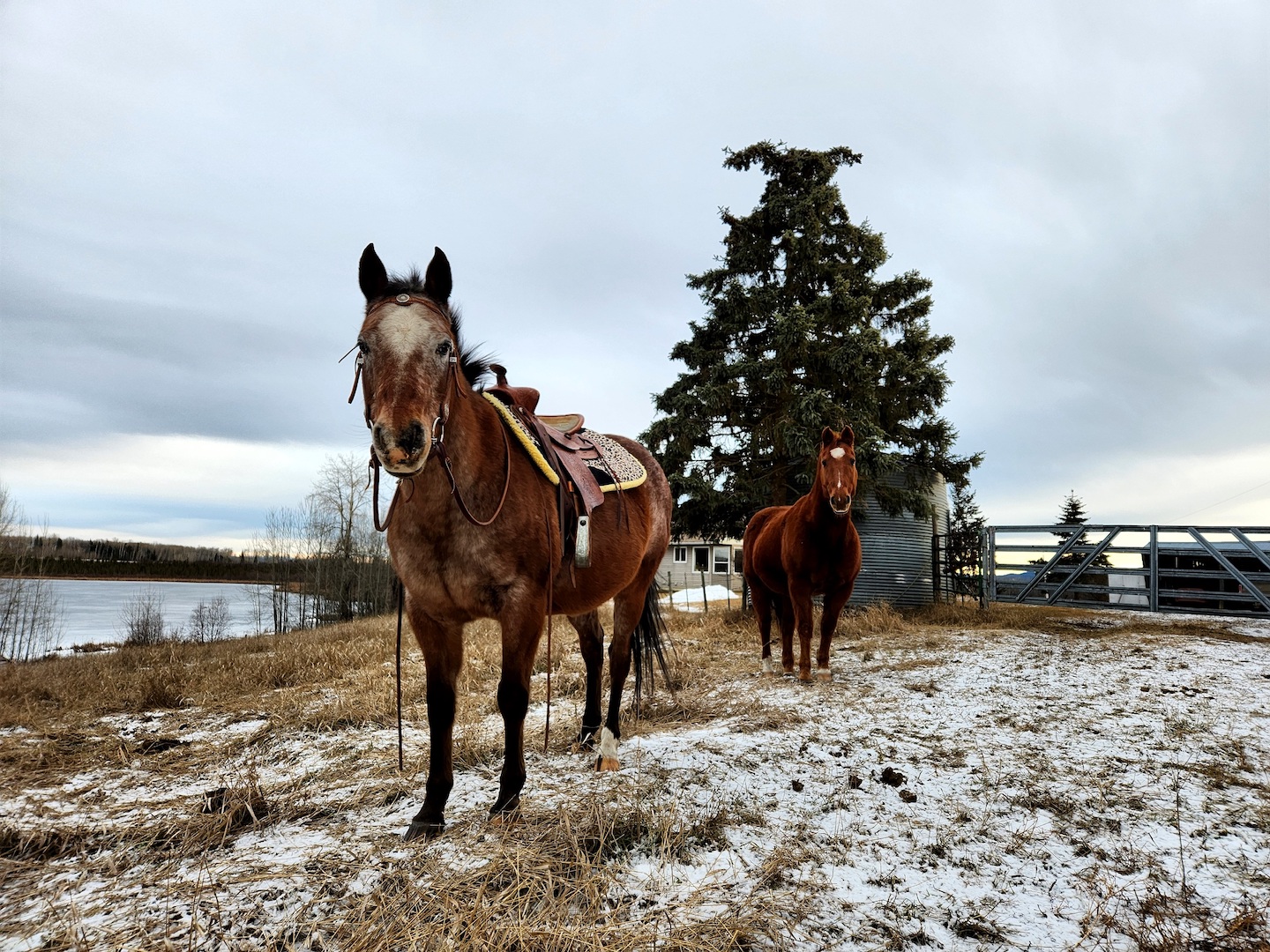This is the biggest review I’ve ever written – but also the best. I’m going to rank the entire Sacketts book series in order. Skip past the photo to get to the rankings, if you’re in a hurry!
The Sacketts DESERVE my personal best. They’ve fought their way to becoming my favourite literary family. They’re the ultimate Western f*cking badasses. The books are equal parts historical saga and delicious fiction you can devour in a single night if you want to.
That’s why instead of reviewing each book, I wanted to read all 17 adventures and then write one mega-review ranking the Sacketts novels in order. (Okay, I did review Jubal Sackett before realizing that a rankings list was the better format.)
These books also have SO many ties to my real life. Here’s my backstory. I worked at a public library for 15 years. And the only genre I never read in that whole 15 years was Westerns. I LOVED Western movies, but I thought the books looked cheesy and lame.
There were a few Western fiction fans at my library – all elderly men. I adored this one sweet old gentleman, Hector Nelson, and would visit other libraries in our system and sign out piles of Westerns on my own card, then return them to our local branch so he could have fresh picks. Yet I never opened the covers myself.
When I met my future father-in-law, he showed me The Sacketts. Somehow in my moustache-loving cinematic adventures I’d never seen this epic Sam Elliott TV miniseries. He then told me about the Sackett books, and handed me Jubal Sackett. Although I was horrified at starting a series on the fourth book, I dove in.
I was hooked.
I thought when I finished the series I’d be telling Jaye my thoughts on every single Sackett book, but he abruptly passed away a month ago. I never thought I’d live in a world where I couldn’t talk to Jaye about the Sacketts. He had owned the complete Sacketts series several times, giving it away to friends and family, then buying them up again. He loved them so much.
He gave me this Western legacy, and I sincerely hope to do them justice. So let’s get to it!

In case you’re totally new to the Sacketts, here’s the gist of the series:
- All Sackett boys are tall and have big hands
- All Sackett boys grew up hunting and doing hard physical jobs “from can-see to can’t-see”, so they’re all conveniently strong, skilled fighters, and excellent at shooting; most are also great horsemen
- All Sacketts are brilliant trackers
- Wherever a Sackett goes, everyone knows his reputation
- All Sacketts will do anything to help another Sackett
- Most Sackett boys describe themselves as unattractive (except for Orrin and Tyrel), but women don’t seem to share that viewpoint
- On that note, Sackett boys always get the girl
- Six of the books are narrated by Tell, who was played by Sam Elliott in the 1979 TV miniseries The Sacketts
- Only one book is led by a female Sackett, and unfortunately it’s bad (more on that later)
Now that you’re ready… here are my TOTALLY ACCURATE RANKINGS OF THE SACKETT BOOKS in order.
1. Jubal Sackett – book 4, 1985
This is literally the best book you could ever read if your imagination wants to be like, exploring early North America, respecting Native people, and rocking the hermit lifestyle. It was L’Amour’s last Sackett book, which is a giant f*cking tragedy because he had planned to write the generations between the 1800s and the 1600s, but Jubal’s story was only the second to that effect when he died. It’s a great narrative, fascinatingly descriptive historical fiction, and has a decently strong Indigenous female protagonist.
I reviewed Jubal Sackett in its own post, so check that out to learn more. It’s about 1620s ‘New World’ exploration, and features an uncommon friendship between a loner white dude and a loner Kickapoo man.
2. Lonely on the Mountain – book 17, 1980
Okay, I lost my shit over this book. I’d been reading this series for a year and a half, and this last book was the perfect note to go out on! It’s well-written, which isn’t always the case with The Sacketts – the L’Amour novels of the ‘60s are painfully repetitive, often using the same word several times on a single page and recycling identical descriptive passages in multiple books. But this whole book is just exhilarating and a great f*cking adventure with a bit of a mystery to it. You also get four prime Sacketts in one book: Tell, Tyrel, Orrin, and Logan (usually the stories are told by just one Sackett, often Tell).
This story is about Tell’s brutal endurance cattle drive from the Dakotas to British Columbia. There are Métis people, and historic BC locales you may have visited on road trips. It’s f*cking awesome. Bonus: there isn’t some random female who at first annoys a Sackett boy with her pertness but wins his heart on the last page.
3. Galloway – book 14, 1970
This is another truly awesome Sackett adventure, and one of the few narrated by a cousin of the main Sackett clan: Flagan. The book is for some reason titled after his brother, Galloway; I guess ‘Flagan’ wasn’t a catchy title? Anyway, Flagan narrowly escapes Apaches and befriends a rogue wolf, but is TOTALLY NAKED and in bad shape from being tortured. He needs to find Galloway, then they have to face down a bunch of murdering white dudes so they can set up a ranch.
This is a solid survival story with lots of classic Western action. It takes place mainly in the mountains of New Mexico and Arizona in the late 1870s, and also briefly features Logan and Parmalee Sackett. Some readers have a beef with the fact that Flagan’s girlfriend from book 12 is forgotten in favour of a new gal, but I honestly didn’t notice because book 12 was forgettable.
4. The Sackett Brand – book 10, 1965
Honestly, this Sackett novel is kind of tied with book 14 and book 8 as far as rankings. It’s SO GODDAMN GOOD, I legit wish they made this one into a TV movie. Tell Sackett is badly injured and cornered, with no fewer than 40 angry killers closing in. Sacketts are racing to his rescue from all over the country, so each chapter is either from Tell’s tense perspective or from a Sackett you haven’t yet met if you read them in order.
It’s a tight, real-time narrative of survival and justice. This book, set around 1875, gives you a taste for later novels featuring Sackett cousins like Galloway and Mustang Man.
5. Sackett – book 8, 1961
This is one of the two Sackett novels that were condensed to create the script for The Sacketts TV movie, and the first one (in series order) narrated by the legendary William Tell Sackett. The book is WAY BETTER than the movie! It takes place in 1874, and it’s got loads of good stuff – exploration, gold, danger from the elements, danger from men with guns, and more.
Although the writing is a little rough, the story of Sackett is fast-paced and enjoyable from start to finish.
6. Sackett’s Land – book 1, 1974
This book is ridiculously cool. The writing is pretty good, and the story is highly enjoyable. It’s the tale of Barnabas Sackett. He’s the first Sackett to sail to the ‘New World’, and the guy who started all of the Sackett traditions. He finds some Roman gold coins buried in the mud of his homeland, the fens of England. Those gold coins are supposed to take him to America, but first they land him in heaps of trouble.
Technically it’s not really a Western, given that it starts in 1599 and in England. But it’s loaded with action, adventure, and even pirates, and it’s the origin story of my fave Western family so it gets a pass. Plus, you get to meet Barnabas’ good pal Jublain, for whom he’d name his future son Jubal.
7. The Warrior’s Path – book 3, 1980
This Sackett book takes you ALL OVER THE F*CKING MAP. Holy shit. Kin Sackett and his brother Yance, Barnabas’ other sons, have to go on a rescue mission from Carolina to New England and then to Jamaica. Yance’s sister-in-law has been kidnapped… or so it seems. So you get 1620s America, adventure at sea, and then more adventure in Port Royal.
The writing is strong, and the story is super exciting. The narrative is also quite different from that of Barnabas or Tell. You get a fresh voice AND a solid female character. Diana may be a love interest, but she’s also strong and independent and the Puritans think she’s a witch – all good reasons to like her.
8. The Daybreakers – book 6, 1960
This is another Sackett book that has a good enough story to balance the lower quality of the writing. It’s not amazing as far as Sacketts go, but it’s a bit above average. The Daybreakers is the other half of the two books that became The Sacketts TV movie. It’s narrated by young Tyrel, the fastest gun in the West. He and his brother Orrin start out working for a cattle outfit, then their stories splinter off – Tyrel takes up arms to defend a family of Mexican Americans, while Orrin falls for a nasty young lady whose equally shady father sets Orrin up in local politics.
What I like about The Daybreakers is the way it captures how horribly Mexican and Mexican American people were treated by whites. The movie cut a lot of that part out. The book showcases Tyrel’s loyalty and sense of justice. He only appears briefly in a couple of other Sackett books, so this is your one chance to get to know him.
9. Mustang Man – book 13, 1966
By the time you get to Mustang Man, you’re burnt out. The last couple of books in series order were kind of meh, and the narrative sounded pretty much the same. This book’s saving grace is that it has a new voice – Nolan Sackett, one of the ‘outlaw’ fighting Sacketts of the Clinch Mountains, Tennessee. His style is gruff, so you think you’re going to get more of a bad boy. But like all Sacketts, as soon as there are womenfolk involved he’s all chivalry and doing the right thing.
Five of the last seven books in the Sacketts series are basically a three-star review from me. Mustang Man is a cut above because the characters of both Penelope and Sylvie are pretty great. It also has some solid plot twists that keep things interesting.
10. The Lonely Men – book 12, 1969
Remember how I said you’d be burnt out mid-series? The Lonely Men would be part of the reason you felt that way. It’s not a BAD story – it’s just not as awesome as you know the Sacketts can be. Tell starts out trapped by Apaches, escapes, then ends up on a deadly mission into the Sierra Madres thanks to the scheming Laura Pritts (that nasty yellow-haired girl Orrin fell for in book 6).
There are some super exciting moments in The Lonely Men, and it’s a good story about surviving both the elements and the bad guys. The weakness is that the writing isn’t particularly good, so as soon as you finish reading it you quickly forget what it was about.
11. Treasure Mountain – book 15, 1973
I had hoped Treasure Mountain would be extra awesome, set in New Orleans and coming off the heels of Galloway. But L’Amour didn’t write the series in order and became a better writer with time, so his best work is randomly interspersed throughout the series – and this ain’t it. In this novel, Tell and Orrin are trying to find out what happened to their father, Falcon Sackett, who disappeared on a gold-seeking mission when they were kids.
There are some great historical facts and descriptions of New Orleans here, and you can’t help but get caught up wondering how their pa died and whodunnit. This is another Sackett novel that struggles with repetitive language, but the last 50 or so pages are quite gripping.
12. Mojave Crossing – book 9, 1964
This book picks up after Sackett, with Tell hauling all the gold he got in the previous book from Colorado to Los Angeles. It’s actually a pretty cool story, and sets things up to pit Tell against Nolan Sackett, who was hired by a devious woman. It’s just not great writing, so at times I got distracted by my brain begging to switch to edit mode.
I think I would have liked Mojave Crossing better if I didn’t spend the entire time super annoyed that there was NO MENTION OF HIS F*CKING WIFE. They got married at the end of book 8, and all you get is a sentence part way through that says Ange is somewhere else and he’s not sure he’ll see her again. It’s like she was conveniently misplaced just so there could be a different woman.
13. Ride the Dark Trail – book 16, 1972
Now you get to officially meet Nolan’s twin brother, Logan! Briefly encountered in books 10 and 14, Logan Sackett is another of those tough Clinch Mountain boys. Like Nolan, he’s supposedly a ‘cynical drifter’ but turns chivalrous the moment a woman is in trouble. This time it’s an elderly woman, and she happens to be a Sackett too. She has an impressive house and land, and a bunch of assholes are trying to drive her off of it, so Logan stays to fight.
This story was honestly kinda boring. You don’t get enough time or reason to care about Em Talon, so the idea that Logan and other men will fight to the death for her is a bit forced. Logan’s character isn’t written as well as the other Sackett boys, and the young lady, Pennywell, is a total yawn.
14. The Sky-Liners – book 11, 1967
This book didn’t make any kind of impression on me. I’ve literally been Googling it to figure out what it was about and why I ranked it poorly when I was finished… because even reading random passages just now didn’t jog my memory. It’s narrated by Flagan, but nowhere near as good as Galloway. The female character, Judith, is SO F*CKING ANNOYING. She basically causes all this trouble by being a stubborn brat, and then somehow lands herself a Sackett.
It’s not garbage writing or anything, but you aren’t swept up by Flagan’s narrative and you aren’t rooting for him to get the girl, so it’s like… what’s the point?
15. To the Far Blue Mountains – book 2, 1976
At the end of book 1, Barnabas Sackett had to return to England. In this book, he’s trying to get back to America but the Queen has a warrant out for him. Coming off the fast-paced action of Sackett’s Land the narrative is rambling, and there’s no real dramatic tension. There’s no specific bad guy, and Barnabas can handle literally anything that comes his way. You never have to worry about him, so it’s kind of a flatline.
A lot of people liked that this longer story about Barnabas spent more time just on his character and the trials of being among the first people attempting to settle in an entirely foreign land. I found it exhausting and the dialogue awkward. And what was up with random hints that Barnabas has magic in his blood?!
16. Ride the River – book 5, 1983
Ride the River was a step to filling the gap between Tell (1880s) and Jubal Sackett (1620s), taking place in the 1840s. Its narrator is Echo, the only female Sackett who gets her own story. She’s a deadshot with a rifle, and pretty much fearless. I wanted to like this book SO F*CKING BADLY. But Echo’s narrative style is grating and poorly written.
It was painful pushing myself through this book. It’s really bad. But not quite as bad as…
17. Lando – book 7, 1962
There aren’t words for how much I hated this book, but I’ll sure try. The writing is terrible. The character, Orlando aka Lando, is devoid of personality. All the interesting stuff happened BEFORE THE STORY EVEN TOOK PLACE. It’s mostly fist fighting, which bores me in books because it’s hard to read three pages of punching if you’re not a fighter yourself.
I literally didn’t give a crap if Lando got what he wanted or not. It’s like the premise was “I want to write a boxing book”, rather than a fully realized member of the Sackett clan. I even hate the cover. Terrible, horrible, no good, very bad book. Do not recommend.
So there you have it, my rankings of the Sacketts novels. I’d say hit me with your own thoughts, but I disabled comments on this blog because I’m a delicate flower who can’t handle trolls. This is the one time I wish I could tough it out, just to have an awesome conversation about this epic series.


